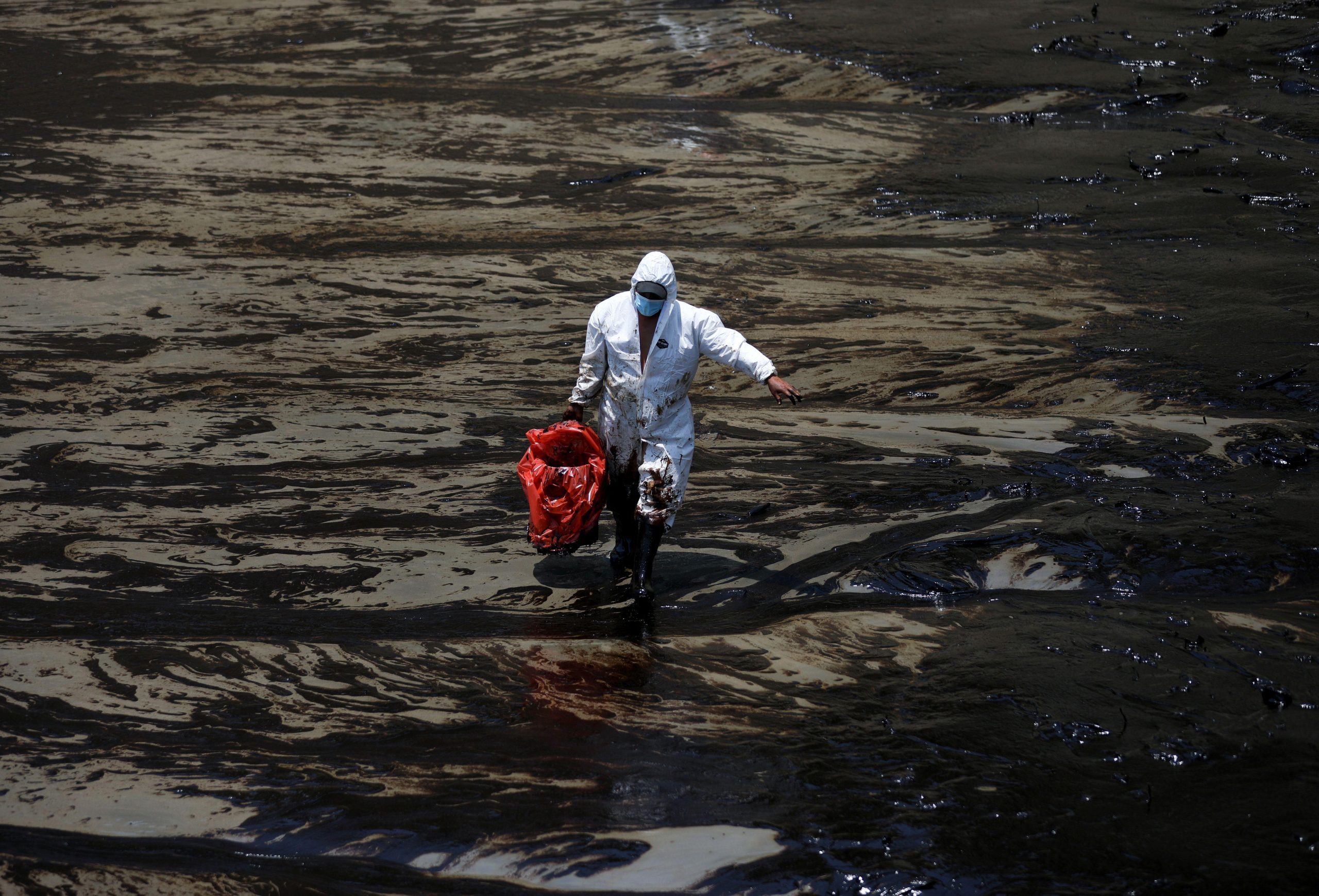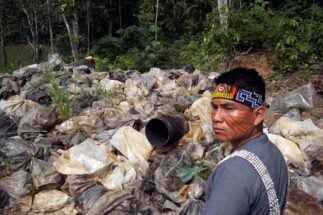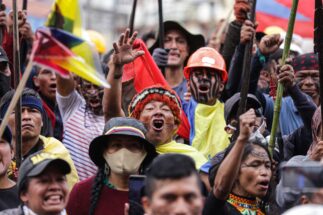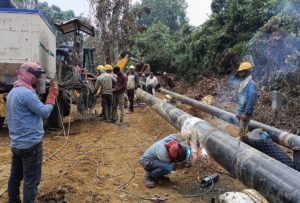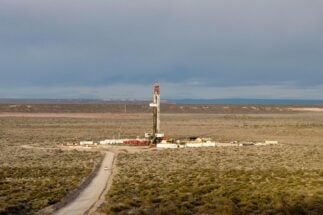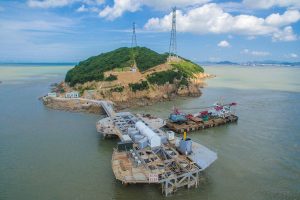A dark, greasy layer sits upon the water, sullying all that it touches as it laps against the pillars of the pier. Here in Ancón, a popular seaside resort to the north of Lima, residents have had to learn to live with this stain on their seas in the year since the oil spill of 15 January 2022.
What began as a spill of 0.16 barrels of oil, as reported by Repsol, the Spanish energy giant behind the incident, had three days later seen some 6,000 barrels pour from one of its refineries. By the end of the month, the Peruvian authorities were reckoning with a major disaster, estimating that more than 11,000 barrels of oil had been spilled into the country’s waters.
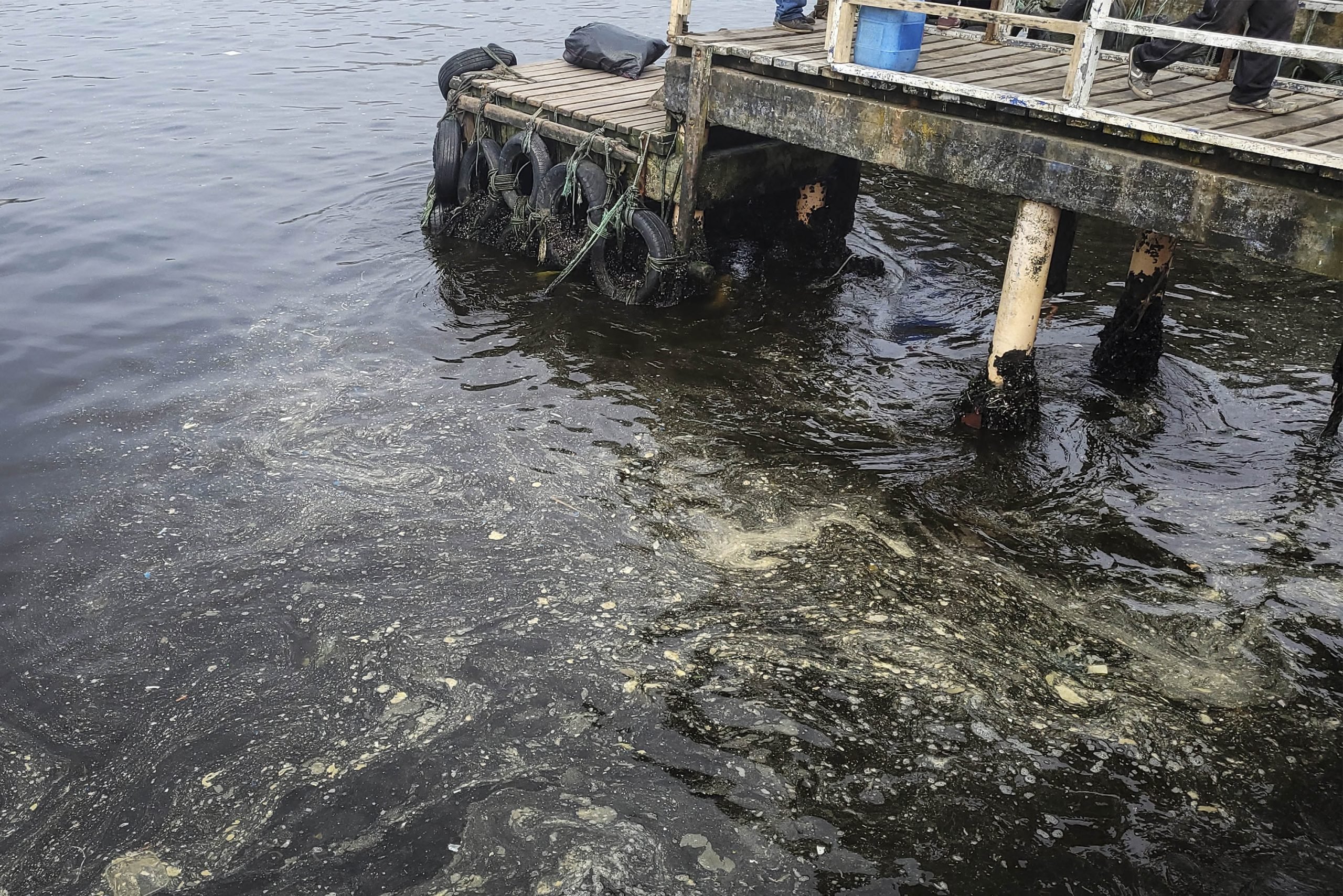
“The pollution is still at the bottom of the sea,” says Luis Chiroque, a fisherman for 46 years, and president of the Ancón Artisanal Fishers Association. He and his colleagues remember what it was like to fish without worry, carrying on traditions and practices they inherited from their parents. The sea, he says, “is our second home, but we no longer live in the same way.”
The spill from the La Pampilla refinery – located 25 kilometres south of Ancón in Ventanilla, and managed by Repsol since 1996 – has been described as the worst ecological disaster to have struck Peru’s capital in recent memory. The incident polluted some 15,000 hectares of coastal and marine area, impacting over 10,000 nearby residents and leading to more than 1,850 animal deaths. Abnormal waves following an underwater volcano eruption near Tonga were said to have caused the spill, though the Peruvian government was quick to also highlight alleged negligence by Repsol.
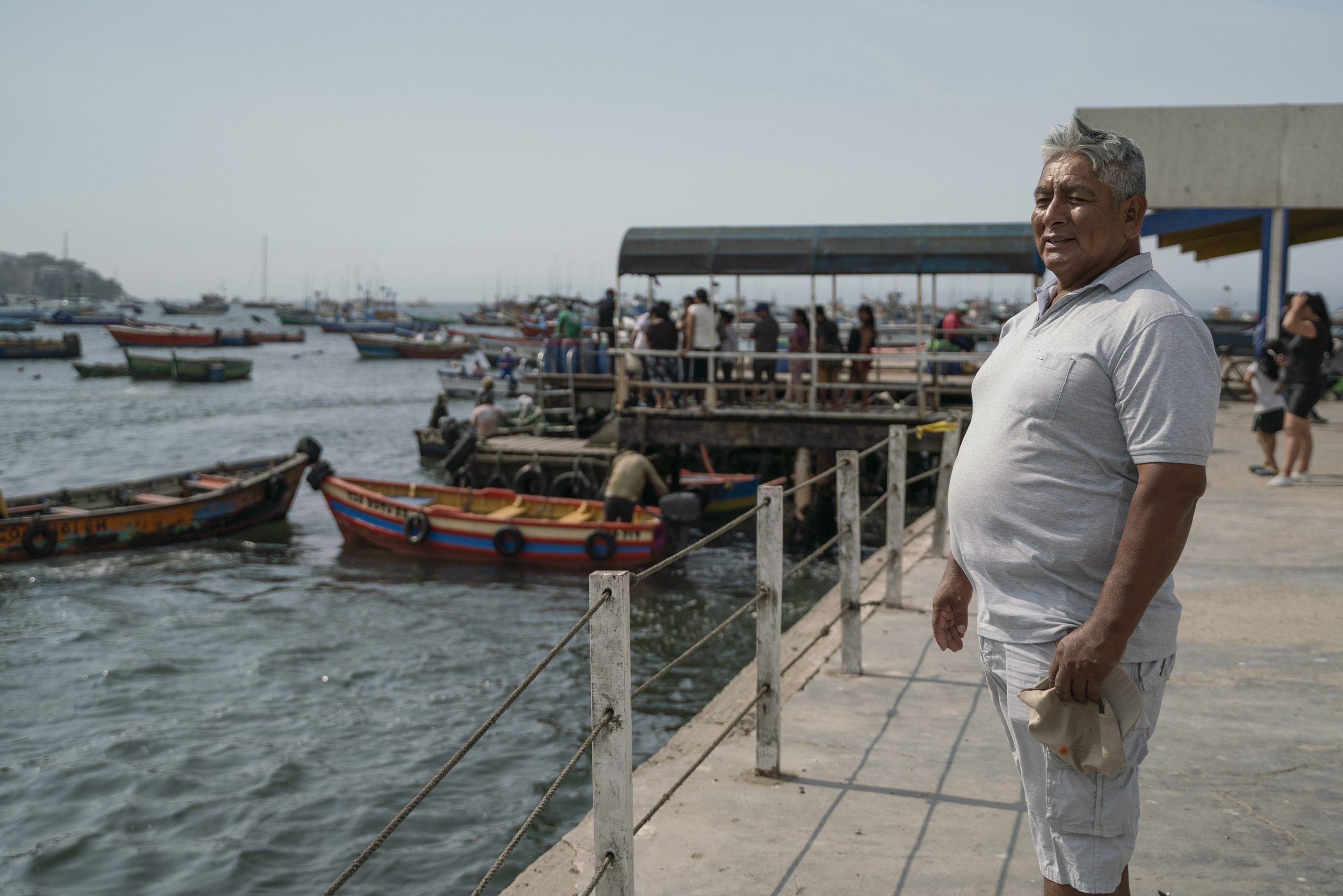
Although the government declared a state of environmental emergency, and an immediate, short-term action plan was approved to deal with the disaster, in November the Peruvian environment ministry’s Agency for Environmental Assessment and Enforcement (OEFA) reported that 71 sites remained contaminated.
On a recent visit to the affected area, Diálogo Chino spoke with fishers from eight different associations, all of whom attested to ongoing contamination. Repsol, however, claims that the sea and beaches are now clean. One year on from the spill, coastal communities remain locked in disputes over the state of the environment and compensation – with many feeling that no solution is in sight.
Pasamayo, the forgotten bay
It is 8am and a group of 30 fishers have gathered near the cliffs of Pasamayo, a coastal area just north of Ancón. It is known to be a difficult place to access – but not for Germán Melchor. Day after day, he fishes here for sole, grunt and morwong, species that inhabit rocks and whose meat is popular for their flavour and texture.
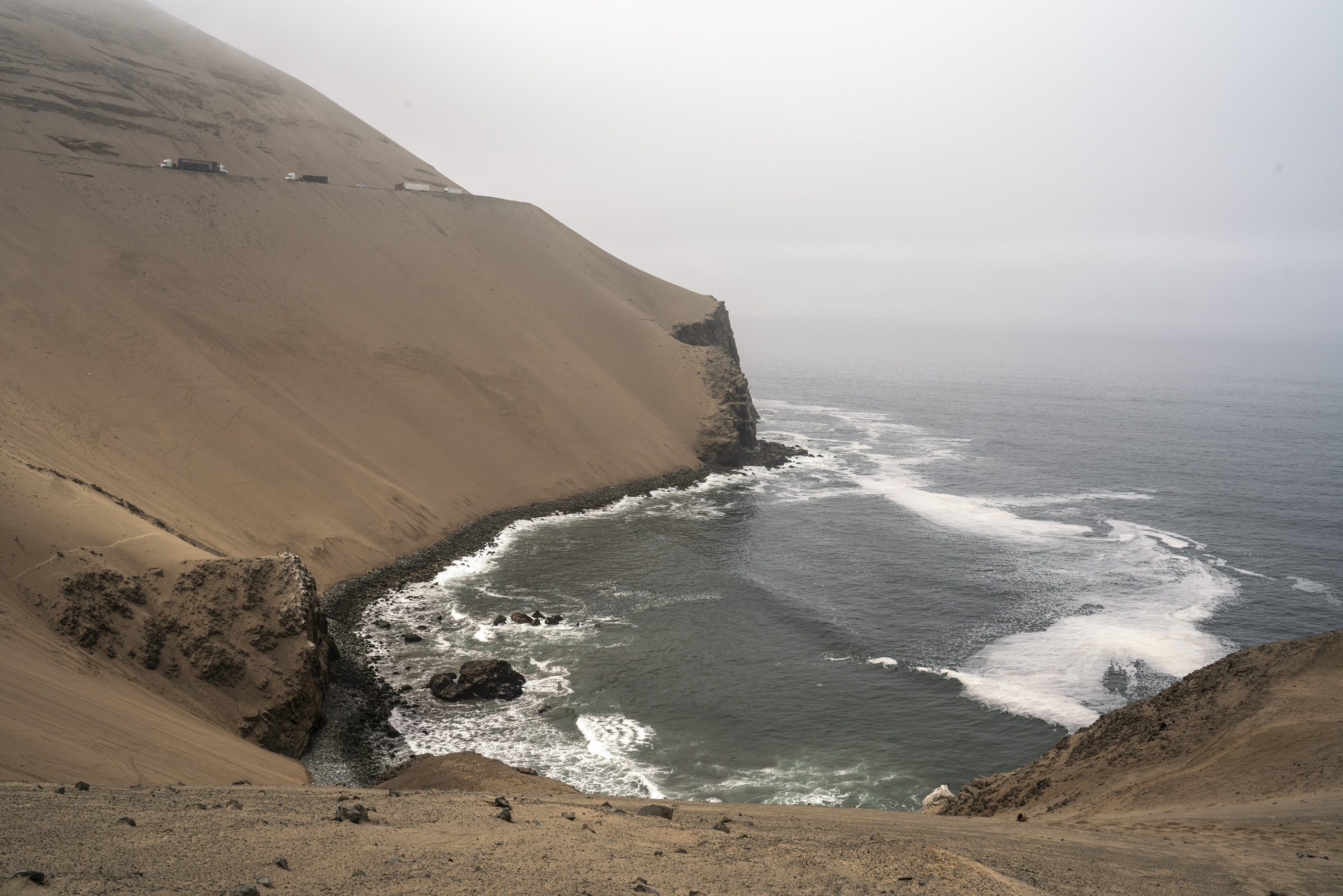
“They say the beaches are clean, but here is the proof,” says 57-year-old Melchor, as he points towards the signs of oil contamination around the Pasamayo bay. He has been a fisherman here since he was 17, and is now president of an artisanal fishers association in Pasamayo that brings together 45 local workers. Following the Repsol spill, he fears for the future: “Six years from now, who’s going to give me work? I’m not going to go fishing in that oil site and feed my children or sell what I catch.”
Melchor says the local fishers had never previously needed help from the government as they had generated sufficient income of their own, but since the spill they do not have the necessary resources. He tells us that one of his sons has had to stop his education because the family could no longer afford to pay.
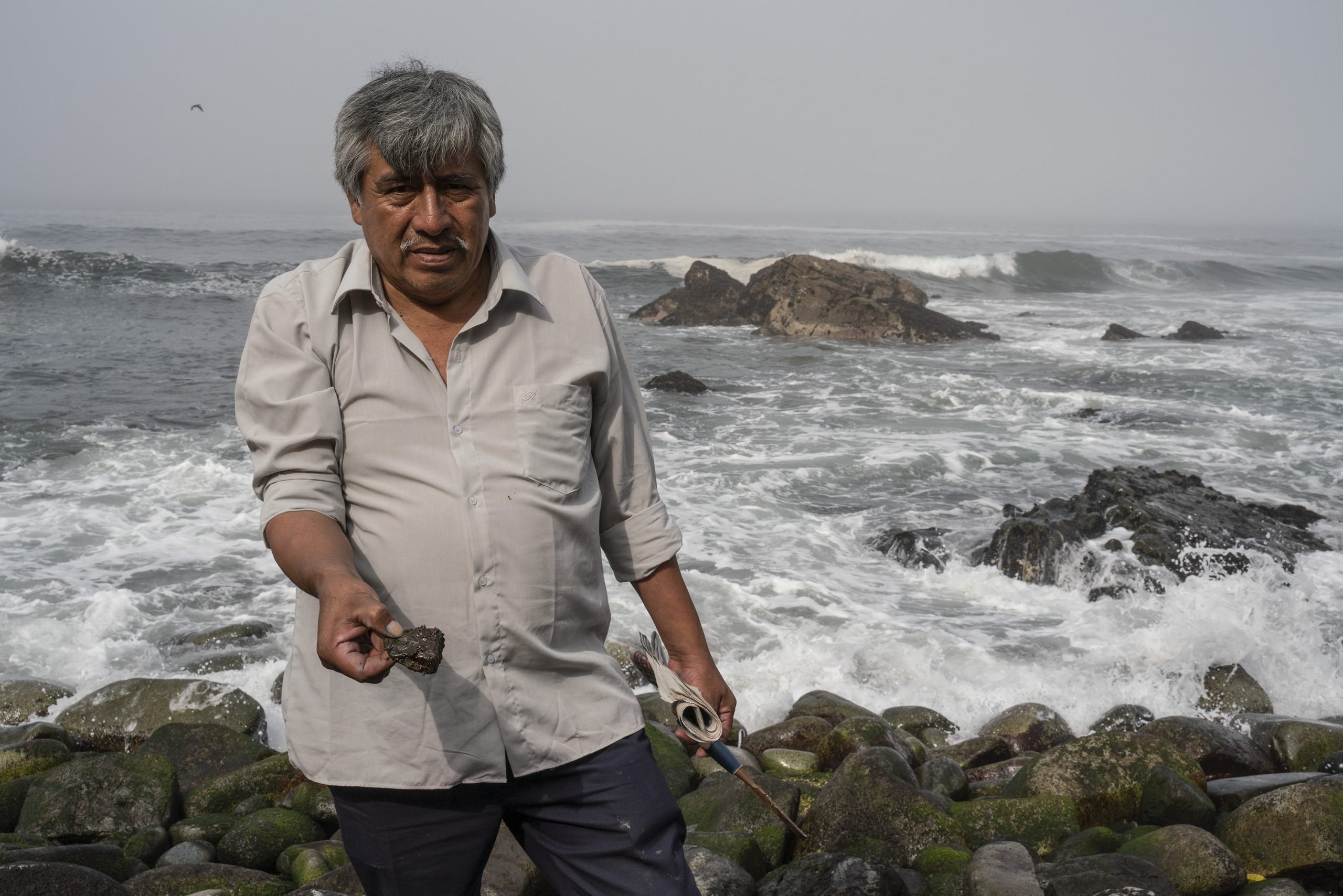
As Melchor guided Diálogo Chino along the route taken by the fishers in his association, the smell of oil was noticeable, while dark stains and oily residues were clearly visible on the rocks along the shore.
No action to remedy the spill at Pasamayo has yet been taken. In its assessment of clean-up operations after the spill, OEFA reported that Repsol’s Peruvian subsidiary had described Pasamayo as “inaccessible” due to its location and landscape, with work in the area presenting an “intolerable level of risk”, even with the use of protective equipment.
I’m not going to go fishing in that oil site and feed my children or sell what I catch
A spokesperson for OEFA told Diálogo Chino via email that the agency “does not have the function of determining, recommending and/or approving decontamination and remediation methodologies for affected areas. However, if areas affected by the La Pampilla environmental emergency are identified, it is up to the company to remediate those areas.”
According to statements by the fishers, the company told them that the area would not be cleaned. Diálogo Chino approached Refinería La Pampilla SAA (Relapasa), the Repsol subsidiary responsible for the Ventanilla refinery, over its clean-up plans, but the company declined to comment.
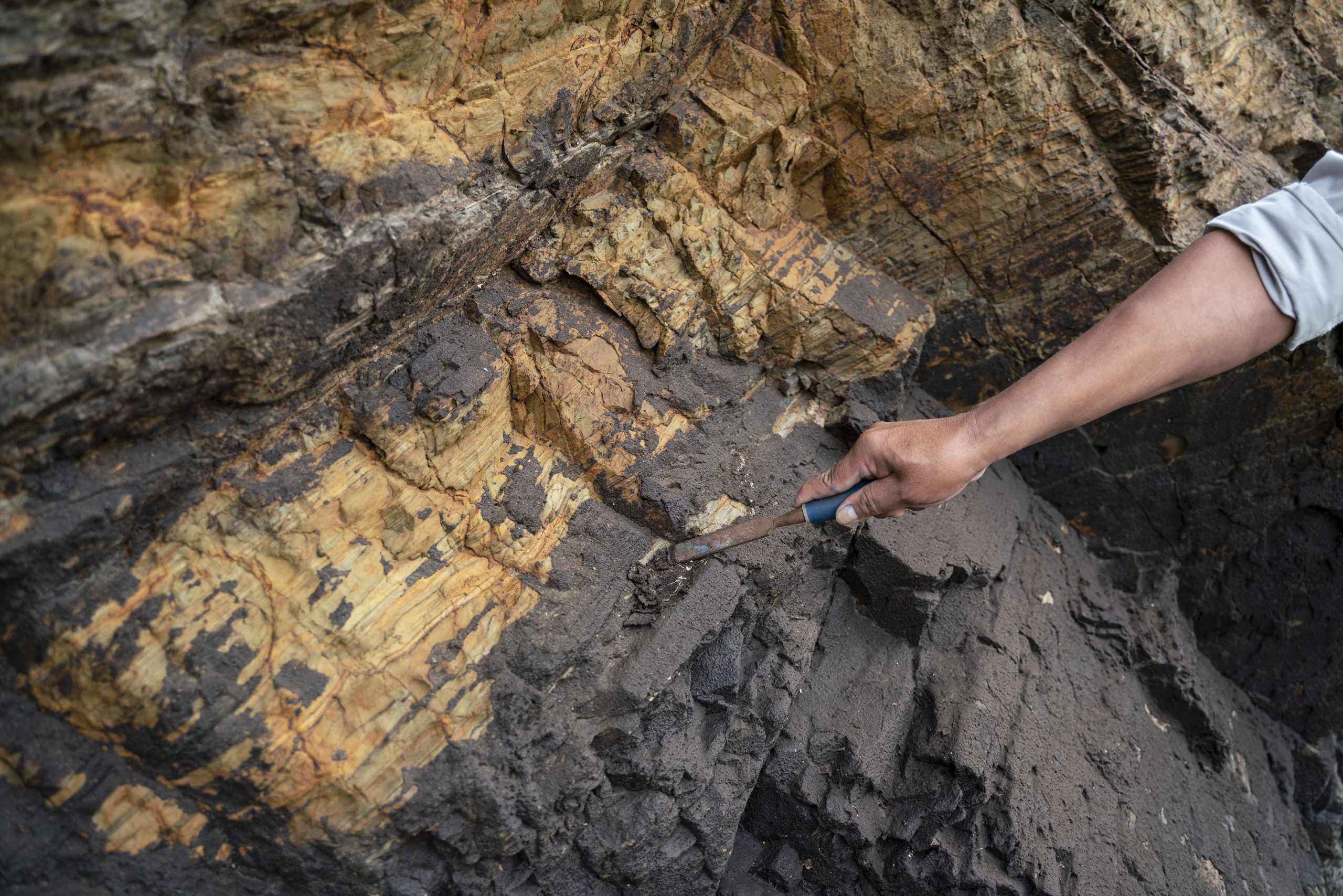
Juan Carlos Riveros, a marine biologist and scientific director of Oceana Peru, an NGO, told Diálogo Chino that the clean-up has not been uniform across all affected areas, and highlighted a lack of planning after the disaster: “If you declare that an area like Pasamayo is going to be a sacrifice area – that is to say, that it is not going to be cleaned up – it should be accompanied by a permanent monitoring and follow-up plan. But none of that happened. The oil that is in that area is going to be carried by the waves and go out into the sea.”
Sources from the Peruvian Ombudsman’s Office told Diálogo Chino that a total of 1,050 fishers from 22 associations have united to demand environmental remediation and compensation for the loss of their source of income. Offers of compensation have been made to them by the company, but they have not accepted. They say it is not known when, or if, the areas where they used to fish will be restored, nor when they will be able to fish safely again.
Rehabilitation plan pending
Among the various actions and sanctions imposed on Repsol by Peruvian entities to try to remedy the spill came OEFA’s order for the company to draw up an environmental rehabilitation plan. But the deadline for its submission is 4 October 2023 – nearly 21 months after the oil spill blighted the Peruvian coast.
Lissette Vásquez, deputy for the environment at the Ombudsman’s Office, told Diálogo Chino that her department has requested information from Repsol and OEFA, as well as Peru’s ministries of health, energy and mining, and production “because the people in those areas need to know whether they can restart fishing activities or not. We are a year after the spill and studies are still being carried out,” she said. According to the United Nations, the damage caused by the spill will affect the Peruvian coast for between six and 10 years.
The Ombudsman’s Office and OEFA told Diálogo Chino, since 2011 three oil spills have been reported by Relapasa at the La Pampilla refinery. Following the 2022 incident, OEFA imposed coercive fines – those requiring compliance by a fixed deadline – of 2 million soles (US$530,000), which were later cancelled. However, the sanctions for a range of administrative failures (see table below) amount to 75 million soles (US$19.9 million). None of them have yet been paid.
Unilateral agreements
Though uncertainty remains over environmental remediation measures, the affected fishers welcomed Repsol’s earlier commitment to provide 3,000 soles (US$790) to every fisher each month in advance compensation, following an agreement between the company and the government in early March 2022. In order to receive the payment, the main requirement was to be registered in a dedicated database for those affected by the oil spill, but fishers report that delivery of payments has been irregular and inconsistent.
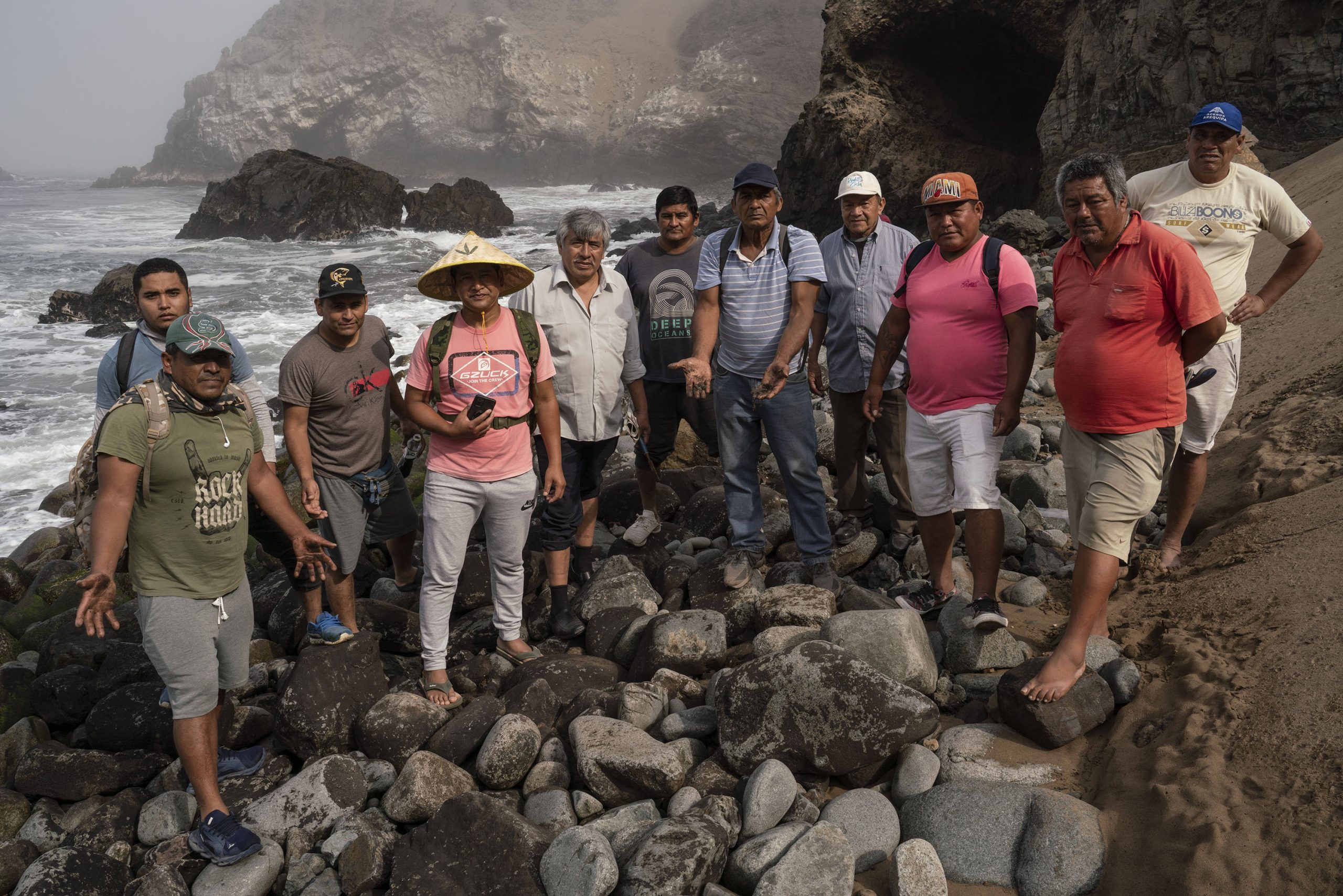
To date, more than 10,000 people have registered, including fishers, shopkeepers, restaurant workers and others affected in the area around Ancón. According to their own reporting, Repsol has reached agreements over final compensation payouts with 60% of these people. But for some fishers, the compensation process has been neither fair nor transparent, with agreements only being signed out of economic necessity.
“We don’t even know how they have done the calculations for the compensation they want to give us,” says Ancón fisher Eddi Ccapacca. “If there is no final report, how can they talk about damages? We have also been affected emotionally and psychologically.”
Compensation agreement documents seen by Diálogo Chino state that Relapasa will grant final compensation without the right to future claims, and “without admitting any recognition of responsibility”.
We want a solution, but it looks like it’s going to be impossible, and there are consequences we are paying for now
Pasamayo fisher Germán Melchor claims some people have even been denied the right to a copy of their compensation agreement: “As victims, they want to make us sign an out-of-court settlement ceding our rights, without having a copy of the document.”
Diálogo Chino approached Relapasa for comment on allegations of environmental damage, its compensation processes and the progress of the rehabilitation plan, but the company said it would not respond.
One year after the oil spill, Repsol’s debt to the environment and affected populations is still incalculable. For fishers such as Melchor, hopes of reaching a resolution are becoming harder to hold onto. “We don’t know how much longer the contamination will be there,” he says. “We want a solution, but it looks like it’s going to be impossible, and these are the consequences we are paying for now.”
